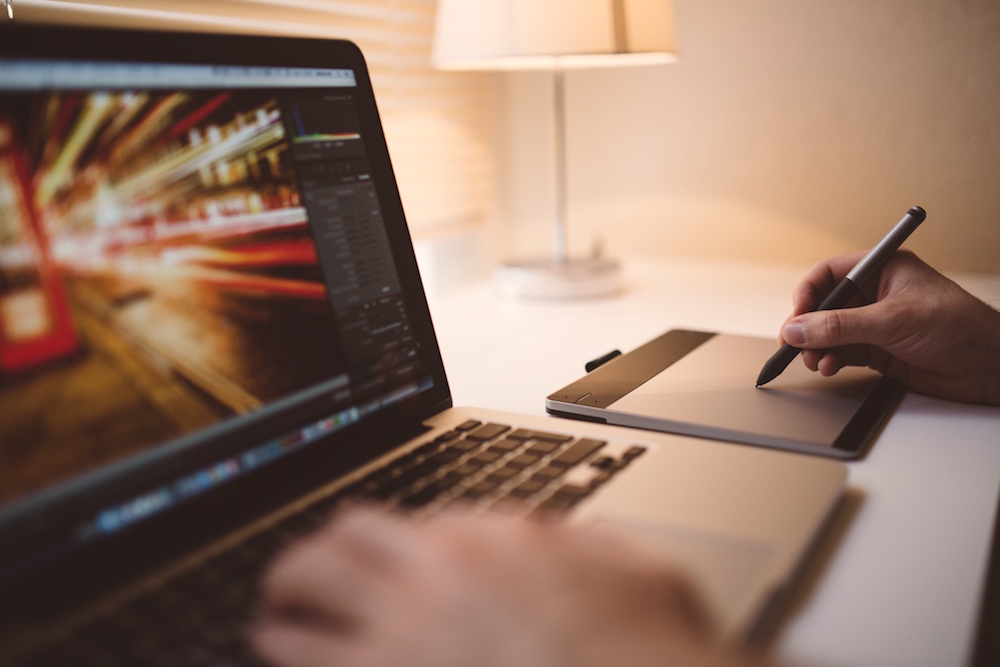
Thank you! You’re either smart, have the opportunity and/or the budget to hire a designer.
If you know the right person, this article is not for you. For the rest… Welcome to the void.
What to do? Where to go? Well, I can assure you what you should definitely not do. Don’t go to Google and type in designers for hire, don’t go to Dribbble, Behance. No. Not just yet.
I know it’s hard to hold your horses and not to rush headlong into nice portfolio pictures. Take a step back and follow our advice first.
Understand what you need to have designed
Understand the business goals of your designer’s work – know how their work should affect your business. This is crucial. We’re not talking about aesthetics but how the work you want to delegate will improve your product and serve your users. Function determines form at least for now.
- Have focus. I’ll tell you a story – it happens all the time. You hire a designer, assign him/her a task and in the middle you throw him/her around the project to “do something with…”. You end up being behind schedule and over budget having achieved the square root of nothing. Congratulations on being unfocused.
- Do research, know business goals and project requirements. Have them listed and accepted before you hire a designer. Understand and know what fields of design have to be covered. For example, want UX? Then get to know the difference between UX and UI.
Try to understand the designer’s job – how they work and what to expect

- Need user experience? Look for a UX designer.
- Need an interface designed? Look for a UI designer.
- Does your product need to be designed, adapted, or polished? Get yourself a product designer.
- Etc, etc, etc.
Remember each profession does not exclusively correspond to one person! You don’t always need to hire three people to design a UI for a mobile application. Many come in bundles!
Mind the choice criteria:
- Budget – Know your budget and never hide it from your designer. Time and budget are their biggest constraints. Also, bear the following two points in mind. Firstly, more experienced designers tend to demand more – and they should. Their experience as a rule should save you even more money on misunderstandings, wrong directions and yessing your stupid ideas (unintentionally stupid – how were you supposed to know?). Secondly, designers from Silicon Valley tend to demand more than people from the UK, China or Poland – and that’s fine – they have to fork out on those $3000 rents somehow.
- Availability – If it’s your first product or an IT project, you should schedule your design work very carefully. Be sure neither the designer nor you leave for vacation in the middle of the project. Also, for first-timers – do your research and prepare the project scope. Assume a schedule and then double it. Trust me.
- Team fit – If you hire a dev house, or any type of studio, check out their designers. Lots of money and time are wasted on mismatches between you, the designers and the development team. It’s always better to have your production machine well oiled. Look for good communication skills in your designers. They should get along with you nicely, but they must get along with the developers flawlessly.

- Skills – Just ask your designer for what he or she can or can’t do. What you must know is that skills don’t equal proficiency in one of the mainstream software packages.Don’t play Sherlock and don’t assume things. I just want to warn you that most people out there would find it extremely difficult to judge designers’ skills accurately. If you have little or no experience in working with designers, you can easily fall into the I know better/ I’m an expert trap. Images can be misleading so never judge designers by plain deliverables. Ask someone with more experience, designers you know and trust. Understand what your candidates do. When talking to them, ask how they do it.
- Personality – Every designer has it. What you need to know is that personality counts for a lot. It can make or breaks the chemistry within your team. It sets the dynamics and flavour of your professional relationship. You will spend some time with this person and you will most likely argue with him/her over some decisions.
- Define the criteria for measurement and success – Imagine how to recognise when done is done. This may be tricky, but the job you need to delegate is rarely a never ending journey (it’s a budget thing).
Where to look for a designer?
If you are new to this game, try asking around if anyone you know has worked with designers and probe them. Personal recommendation is always the best way to go. Period. If their profile doesn’t suit you, dig a little deeper ask and the least you can get is another recommendation that pushes you in the right direction.
You could also:
- Ask someone you don’t know whether he or she has worked with any designers or not. You might get lucky.
- Ask your development team. They usually know someone who can deliver.
- Google, Behance, Dribbble, etc… Just don’t fall too much for nice pixels and bargain bin prices.
Talk to/meet him or her. So you’ve heard about someone or came across this killer profile. You make a move. As a rule, always talk in person or via Skype. See if you’re a match or not. Ask about their workflow and if it’s possible, about the whys & wherefores of their portfolio projects. Coming up is a set of extra tips:
- If they are a douchebag – run. It’s the number one rule. Always talk to your designer. You need to create a team that communicates and gets along nicely. You want to avoid missed calls.
- Look for the right questions from your designer candidate. Be alert if their main focus is not business or user related.
Ok, so now’s the part when you’re just about to choose your designer. I advise you to ask yourself these two questions:
1. Do you trust your candidate?
Your designer needs to have a safe space, to be able to argue with you, to tell you your ideas suck. Here’s a list of additional questions that might help out:
Do you have solid foundations to believe that the work you’ll get will suit your needs.
- Do you trust your candidate’s judgement?
- Do you trust your candidate’s advice?
- Can you trust your candidate to tell you the truth, warts and all?
- Do you understand the workflow — are they transparent enough?
You should research and talk to your candidate for as long as it takes you to be absolutely sure of all of these things above.
2. Do you respect your designer?
None of the things your designer does or says are worth a dime unless you respect them. This can be a cultural thing or your personal bias. It’s vital for any successful relationship. If you believe your candidate won’t be respected because of lack of experience or some other reasonable criteria (excluding racism or chauvinism) just admit it and look further. Don’t lie to yourself and later treat your designer the way you’d like to be treated yourself.
Do your paperwork. Don’t slack on the paperwork. Make sure that all the relevant usage rights are signed and sealed — talk with your lawyer or have it read by someone experienced. Small details can end up being deal breakers so beware, and if you really care about this specific designer, leave space for some negotiations.
Shake hands and set out on the journey! Hope it takes you where you wanted.
Get the TNW newsletter
Get the most important tech news in your inbox each week.





